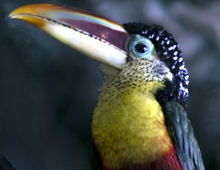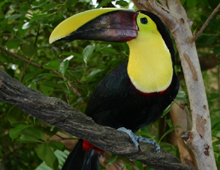
This elegant bird is unique among toucans for having a cap of tightly curled feathers that appear “permed”. While not a rare bird in its range (south of the Amazon, divided among Peru, Bolivia, and Amazonian Brazil), it was almost unknown in captivity before the 1960s, and has never been common in zoos. The Curl-crested aracari was not bred in captivity until 1996. The DWA has had immense success propagating this species, with more than 100 birds since 2006.







